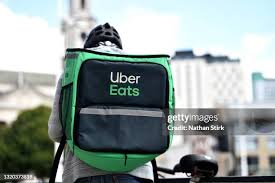Uber Eats: Transforming Food Delivery Services

Introduction
As food delivery continues to evolve rapidly, Uber Eats has emerged as a leading player in this market. Launched in 2014, the platform allows users to order meals from their favourite restaurants through an easy-to-use app, facilitating convenience and accessibility for millions. Its growth and adaptation during events such as the COVID-19 pandemic have made it a crucial service for many consumers, reflecting wider trends within the food and delivery industry.
Recent Developments
In 2023, Uber Eats saw a significant increase in demand as restaurants sought ways to ensure their survival amid economic pressures. A recent report revealed that a staggering 40% of people surveyed have utilized a food delivery app, with Uber Eats leading the charge in many regions. This increased reliance can be attributed not only to the ongoing impact of the pandemic but also to changes in consumer behaviour that favour convenience.
Additionally, Uber Eats has expanded its offerings, partnering with grocery and convenience stores in a bid to diversify its services beyond traditional restaurant deliveries. In March 2023, Uber Eats announced new collaborations with leading grocery chains to enable customers to order everyday necessities via its platform, leveraging its established logistics network to meet growing consumer demands.
Innovative Features
To maintain its competitive edge, Uber Eats has introduced several innovative features, such as subscription services like Uber One, which allows frequent users to pay a monthly fee for perks like free deliveries and discounts. Recent updates also include the implementation of AI-driven food recommendations tailored to users’ tastes, enhancing the overall consumer experience.
Conclusion
Looking ahead, Uber Eats is expected to continue expanding its reach and diversifying its service offerings in response to changing consumer preferences. Analysts predict a growing trend towards hyper-localisation in food delivery, where platforms enhance service in specific neighbourhoods based on local demands. For consumers, this signifies a future where the convenience of food delivery becomes even more integrated into daily life. With continued investments in technology and customer service improvements, Uber Eats is set to play a pivotal role in shaping the future of food delivery.









